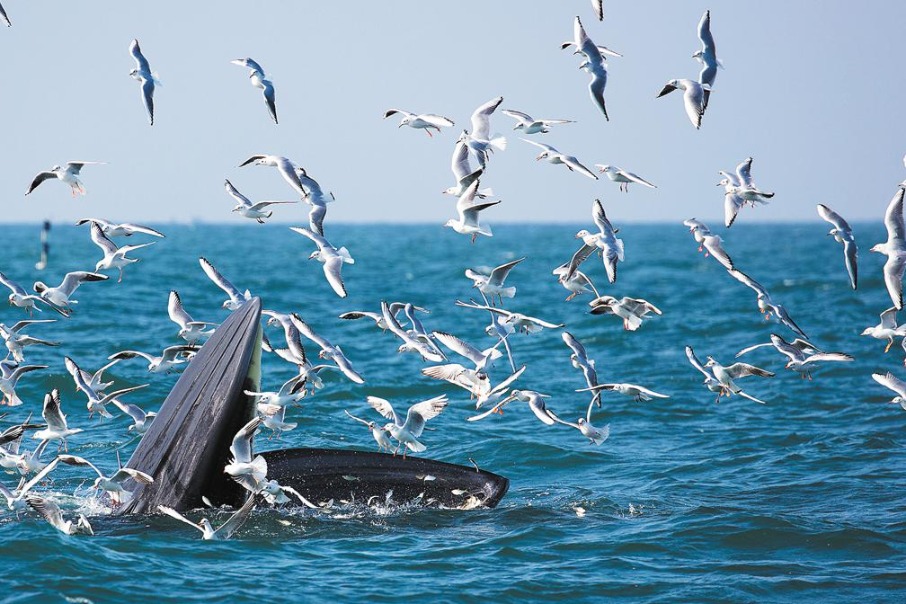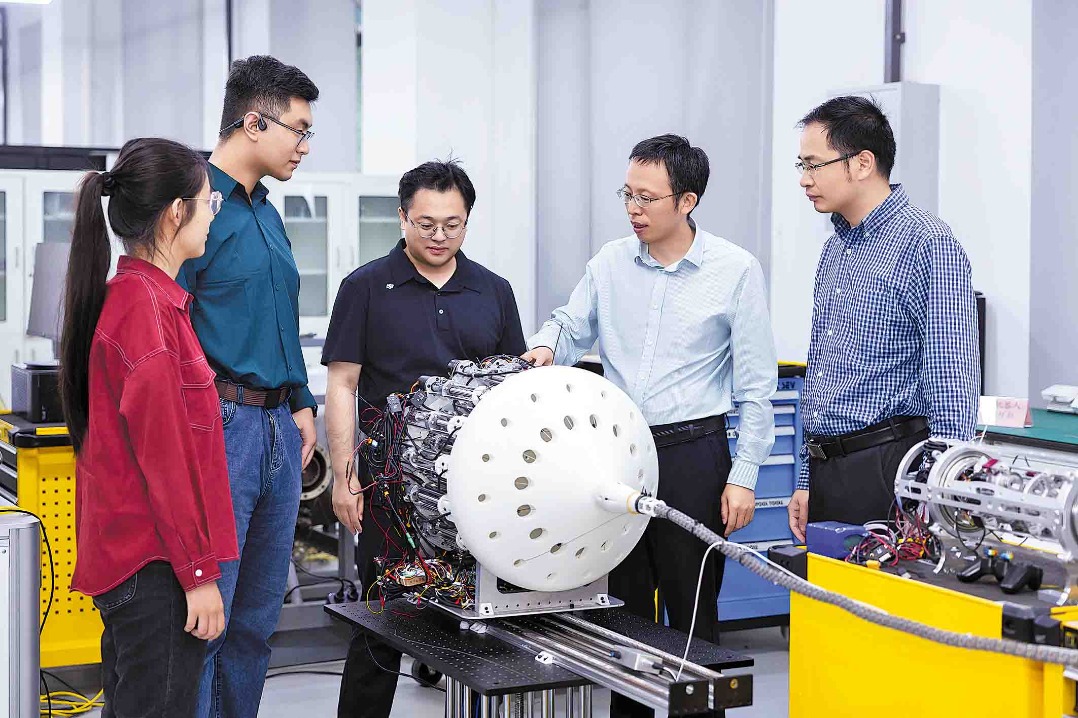Minimizing methane
Cutting emissions of the gas in the energy, waste and agriculture sectors will help China realize its dual carbon targets

Cutting emissions of the gas in the energy, waste and agriculture sectors will help China realize its dual carbon targets

As the world's second most abundant greenhouse gas, methane has received high media and political attention in recent years. The latest report from the Intergovernmental Panel on Climate Change pointed out the significant role reducing methane emissions can play in lowering peak warming and reducing the likelihood of overshooting warming limits.
China, the largest methane emitter, has started ramping up its efforts to reduce methane emissions, but there is more that could be done. With bold thinking and higher ambition China can improve its reductions in the energy, waste and agriculture sectors.
Methane is the main component of natural gas, with most human-caused emissions coming from the energy supply, agricultural production and waste management. Globally, methane accounted for 19 percent of greenhouse gas emissions in 2019, second only to carbon dioxide, according to the Netherlands Environmental Assessment Agency. But during the first 20 years that methane is released into the atmosphere, it is 80 times more potent than carbon dioxide. The 2021 UN Emissions Gap report shows that as methane breaks down more rapidly in the atmosphere and has a shorter atmospheric lifetime than carbon dioxide, taking rapid and proactive action to reduce methane emissions could significantly slow the rate of the global temperature rise.
China's new master plan on climate change, released in October 2021, calls for strengthening control over methane emissions. During the UN climate conference COP 26 last November, China and the United States issued the Joint Glasgow Declaration on Enhancing Climate Action in the 2020s, which included methane reduction as a point of emphasis. China is also planning to develop a comprehensive national methane strategy, as mentioned in the Declaration.
China's methane emissions were around 1.16 billion metric tons of carbon dioxide equivalent (CO2e) in 2014, according to the latest available data from China's GHG national inventory, with 45 percent coming from the energy supply, 40 percent from agricultural production, and 12 percent from waste management. According to Tsinghua University's research, with the current policies, China's methane emissions will slowly increase to around 1.39 billion tons of CO2e by 2030, and will decrease between 2030 and 2050. Projections of methane emissions by sector show that emissions from agricultural production will continue to grow, but those from energy supply and waste management will decline. However, even with strengthened policies and cost-effective measures, a study by the World Resources Institute indicates that 650 million tons of CO2e methane emissions will remain unabated in 2050 due to technological and cost constraints.
There exists large mitigation potential from energy supply in the near future.
The largest source of China's methane emissions is energy supply, particularly fugitive emissions from coal mining, followed by oil and gas operations. As China improves its control of coal production and consumption, the associated coal bed methane emissions will gradually decrease. But abandoned coal mines pose huge challenges.
Meanwhile, research from the International Energy Agency shows that almost 45 percent of global methane emissions from oil and gas operations could be avoided with measures that would have no net cost, given the gas that can be captured and sold based on the average natural gas prices between 2017-2021. Since China is heavily dependent on imports of oil and gas, methane emissions from the oil and gas industry account for a smaller share than in the US, but they are still worth noting.
Methane emissions from the waste sector, while accounting for less than 12 percent of China's methane emissions, can be reduced in cost-effective ways. China's new waste-sorting policy, zero-waste pilot program and anti-food waste law, can all provide mitigation opportunities by encouraging waste reduction and reuse. Aligning methane emissions reduction targets with these policies could further mitigate municipal solid waste-related methane emissions.
Curbing methane emissions from agricultural production remains challenging. The primary source of methane emissions from agriculture is rice cultivation as well as livestock production. The former is from anaerobic decomposition of organic matter in rice paddies. The latter is particularly from enteric fermentation and manure management in ruminants, such as cattle and sheep. With rapid urbanization and rising living standards, China's meat consumption will continue to grow, so will the associated methane emissions. Emissions mitigation in this area will require behavioral change among consumers, such as dietary shifts.
Going forward, seizing mitigation opportunities in oil and gas operations and waste management in particular could help reduce China's methane emissions at a low cost. Emissions data monitoring and estimation, technological development and capacity building can help with the challenge of controlling methane emissions from coal mines and agricultural production. Meanwhile, setting sector-specific methane reduction targets and integrating them into China's existing climate policies can generate necessary synergy and make them policy priorities.
The author is program director of the Innovative Green Development Program.The author contributed this article to China Watch, a think tank powered by China Daily. The views do not necessarily reflect those of China Daily.
Contact the editor at editor@chinawatch.cn


































